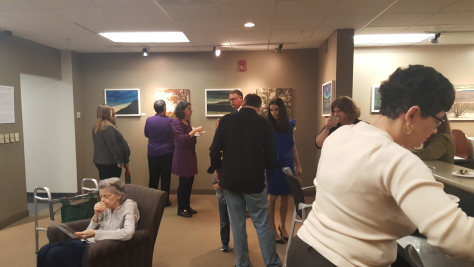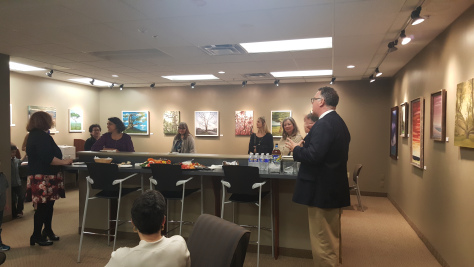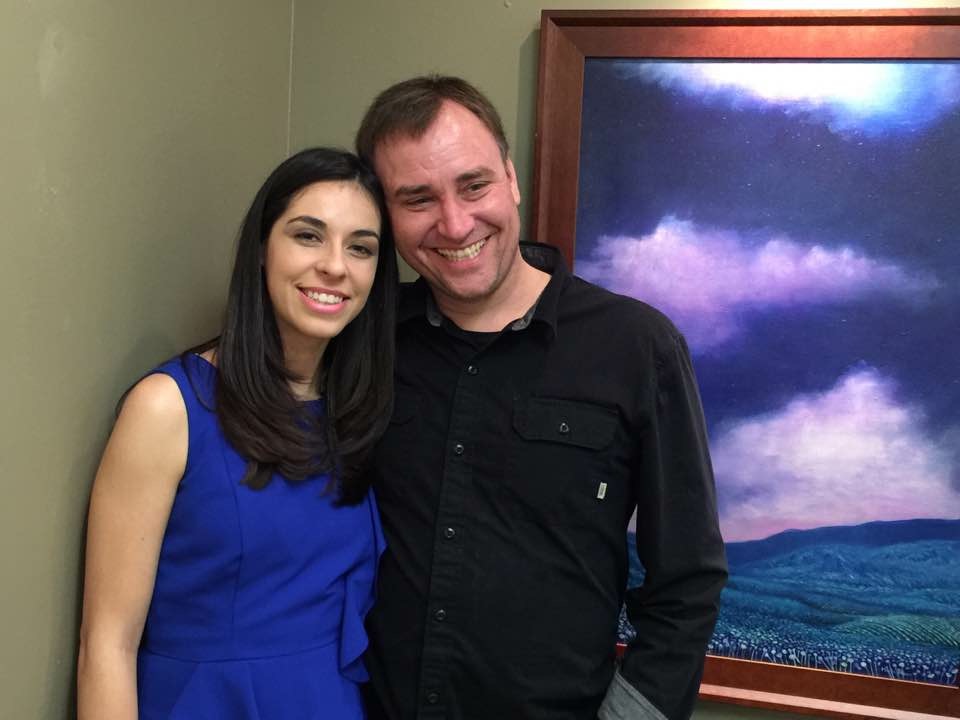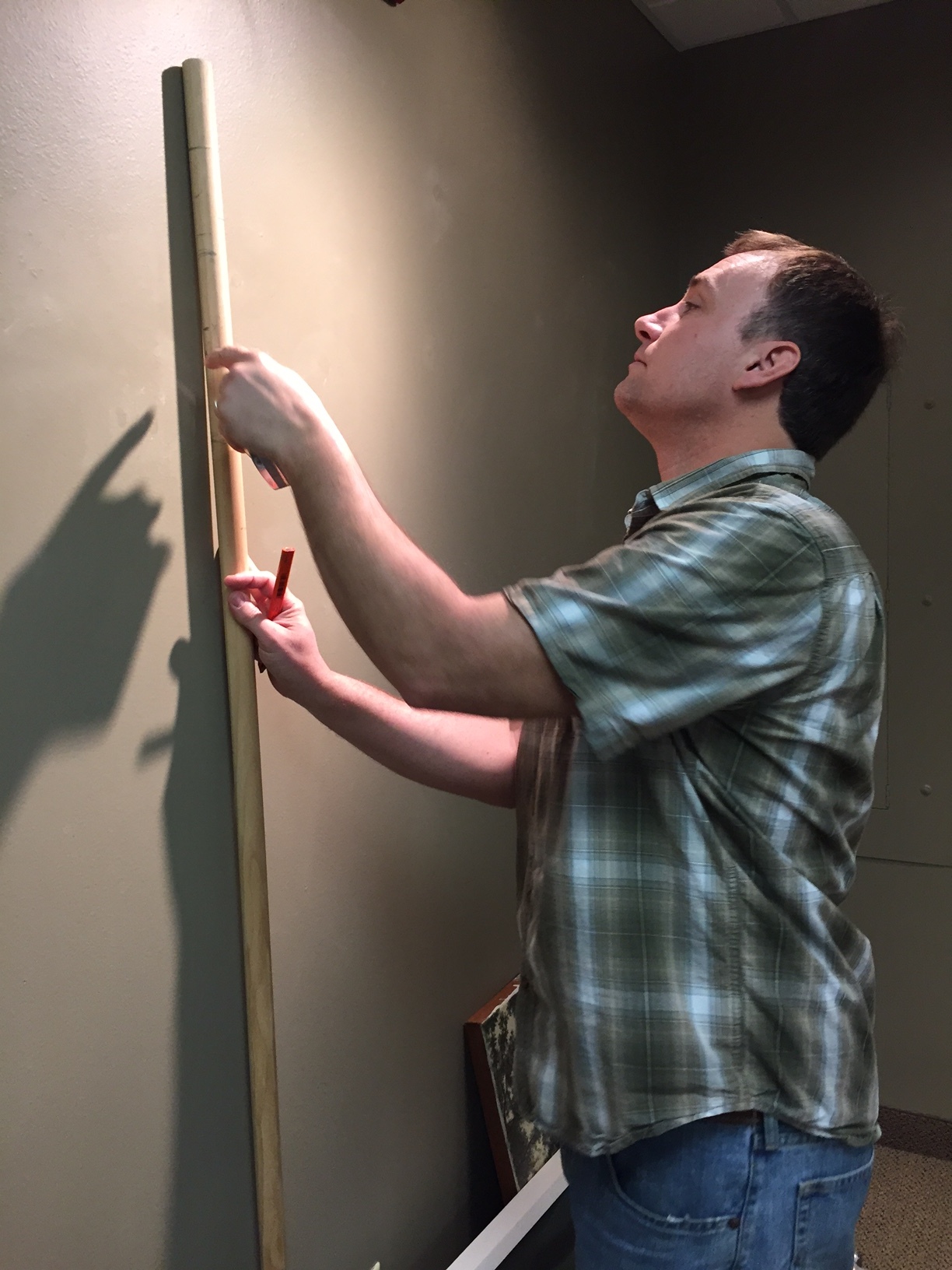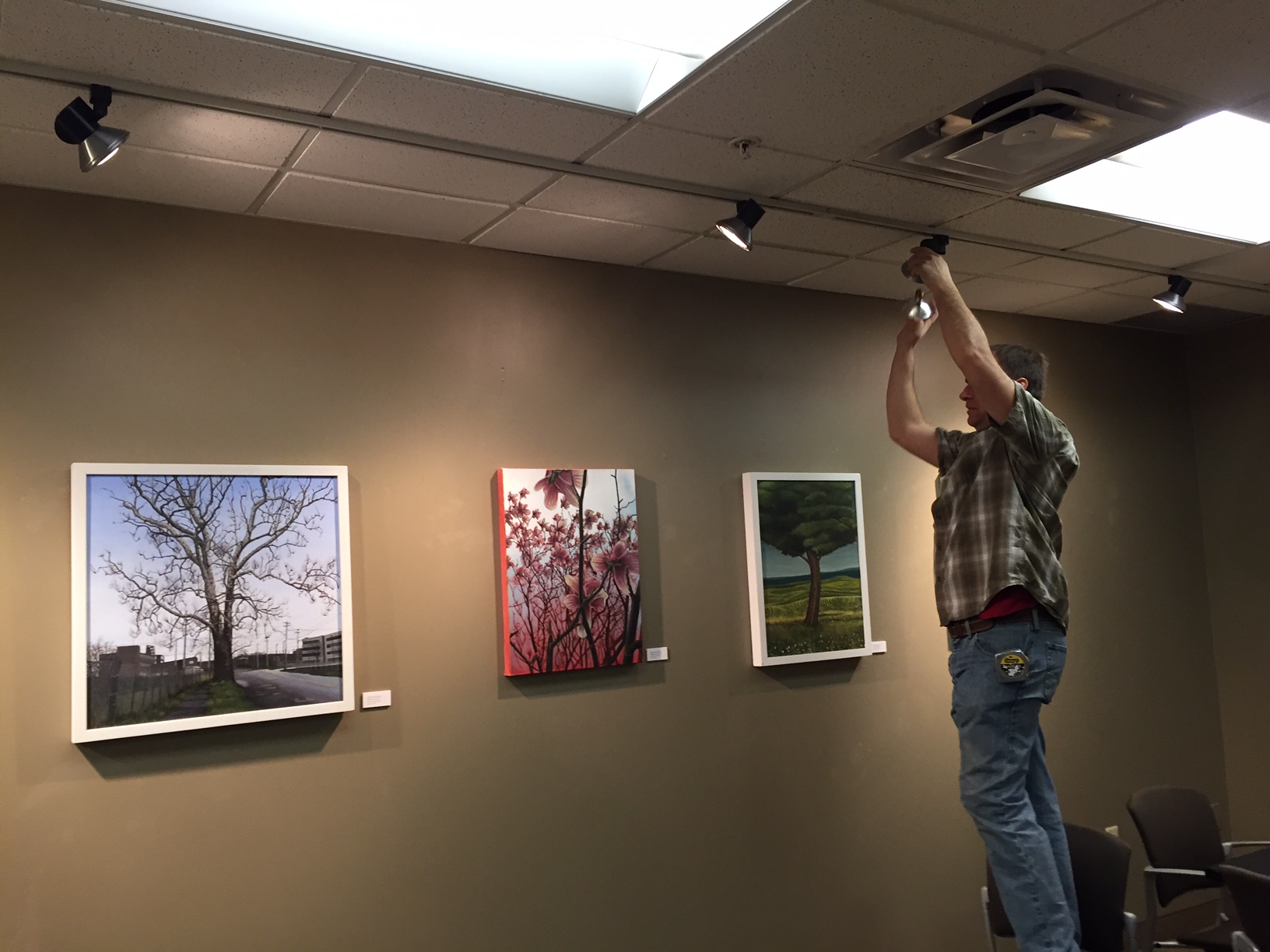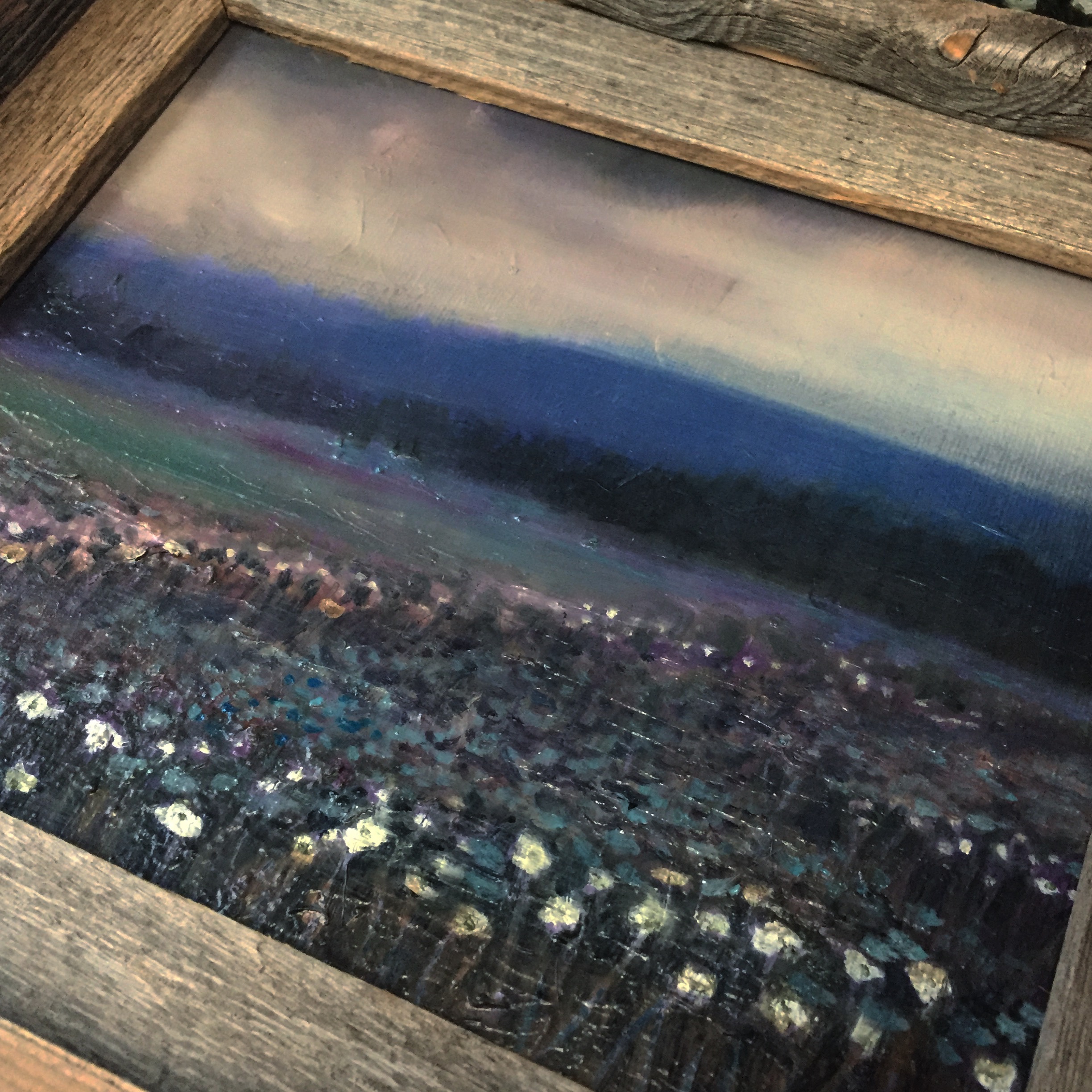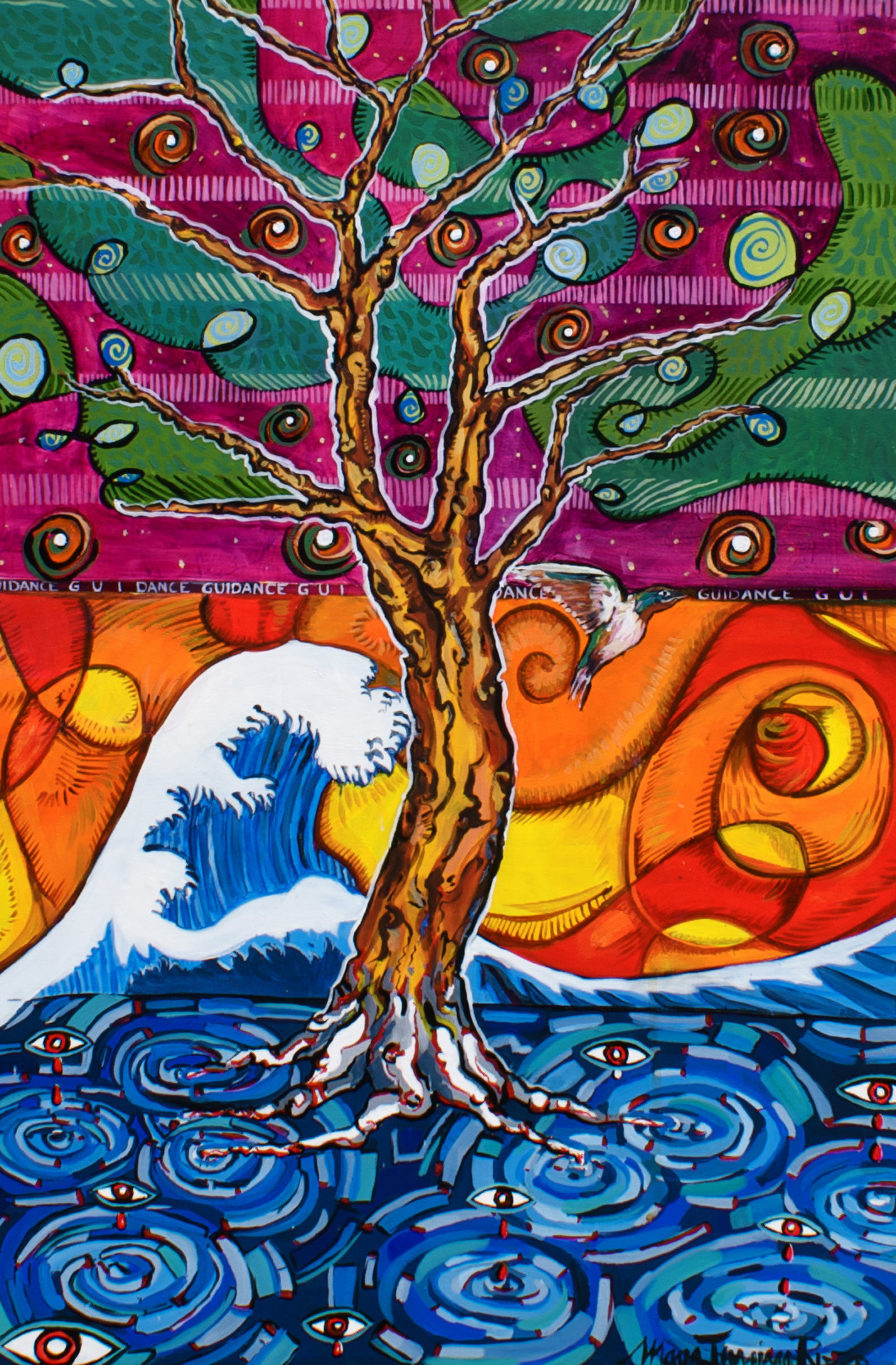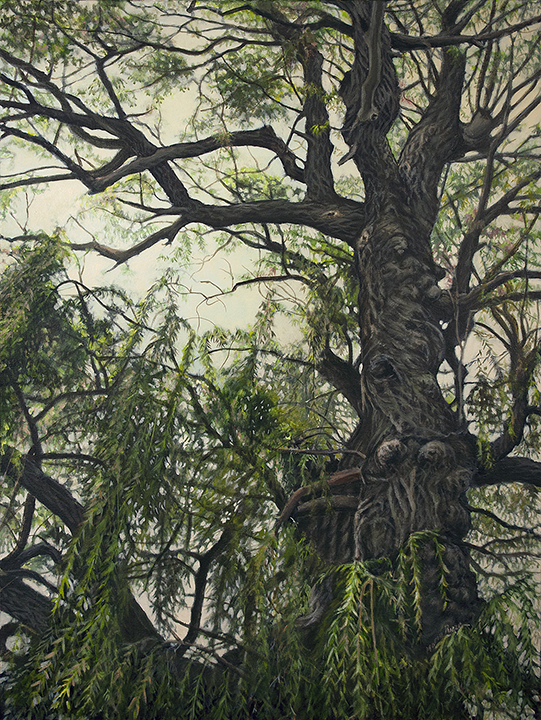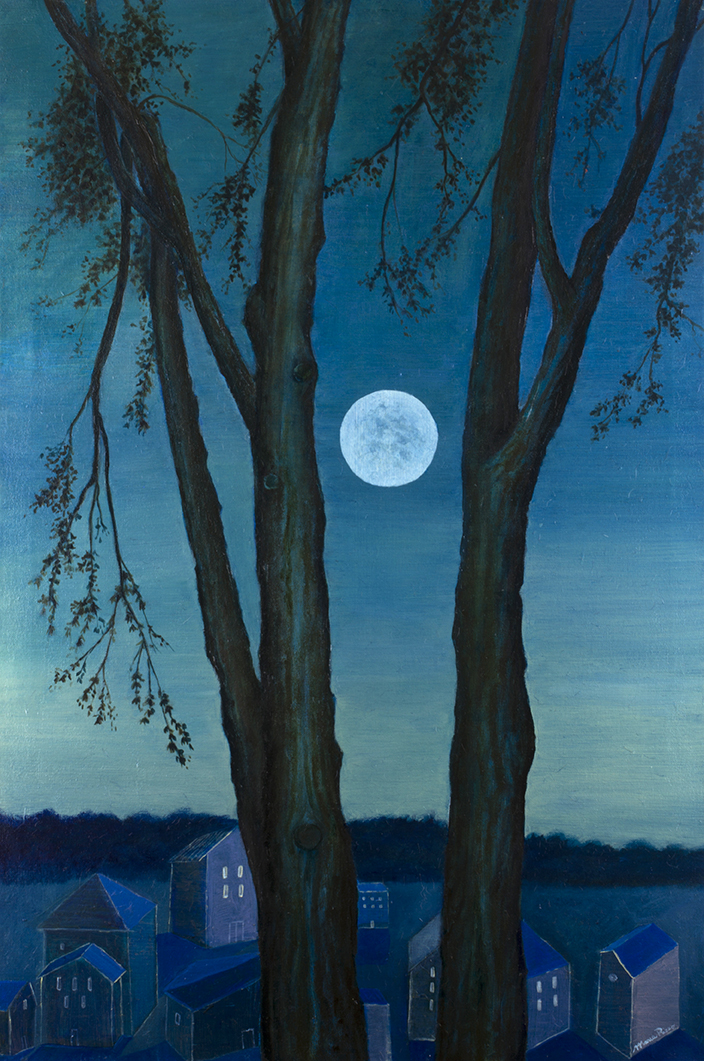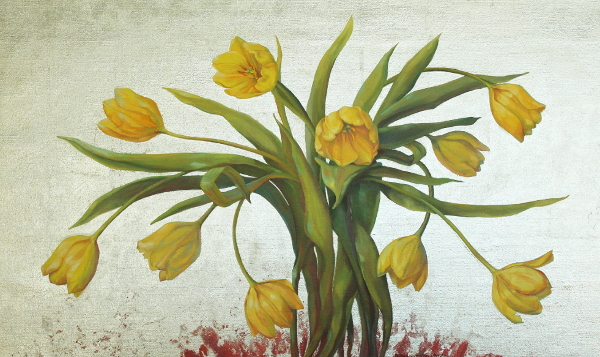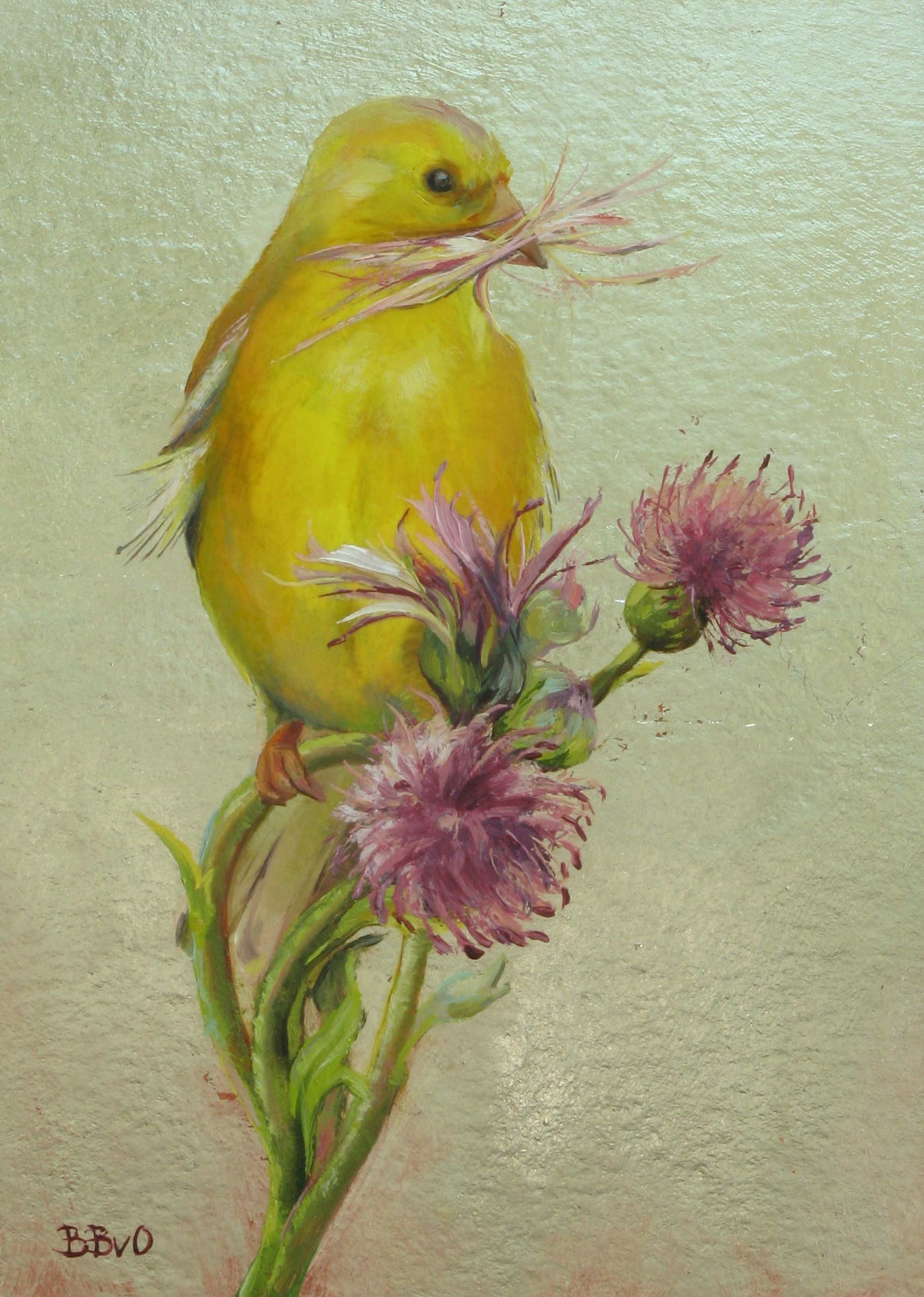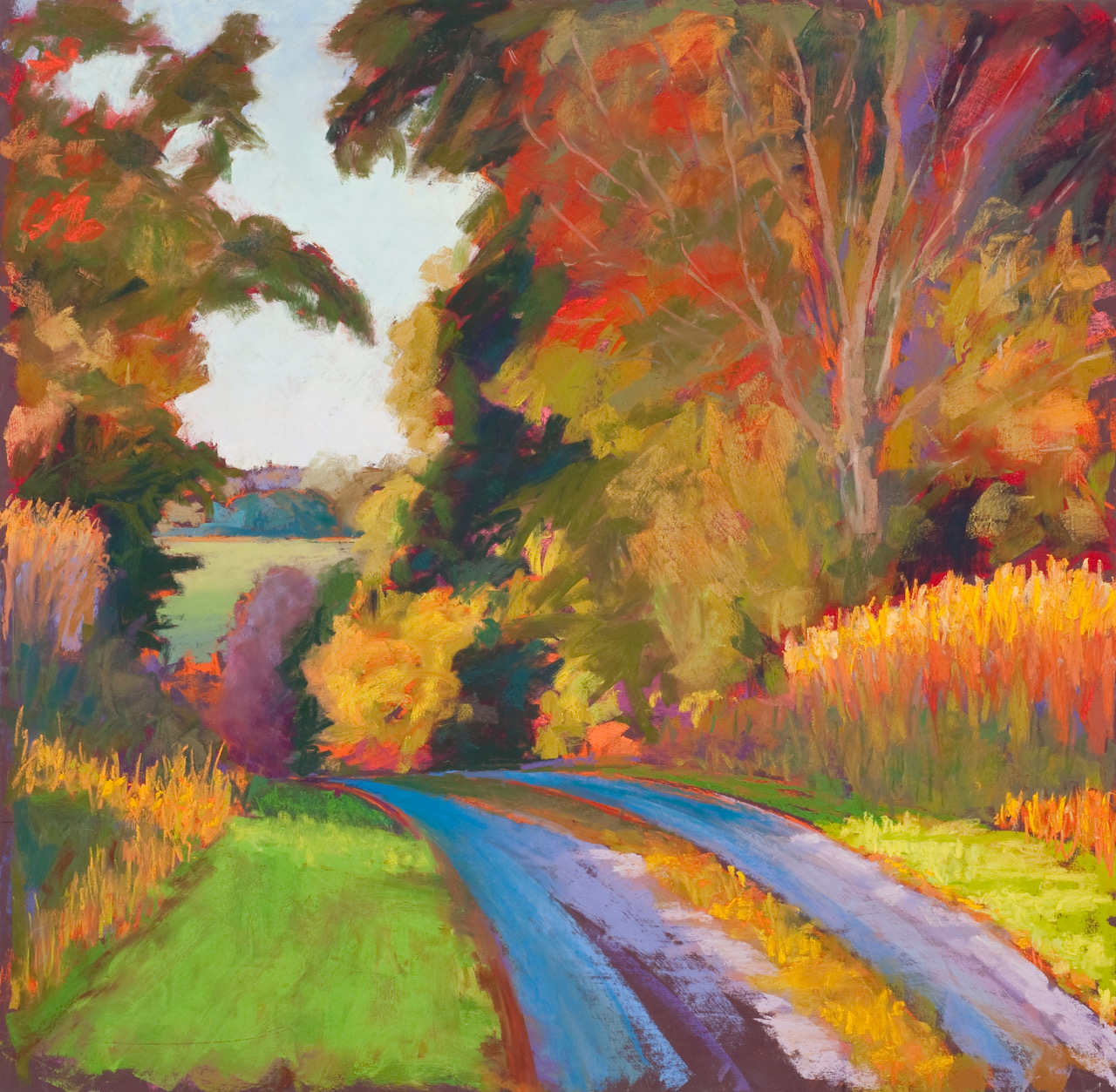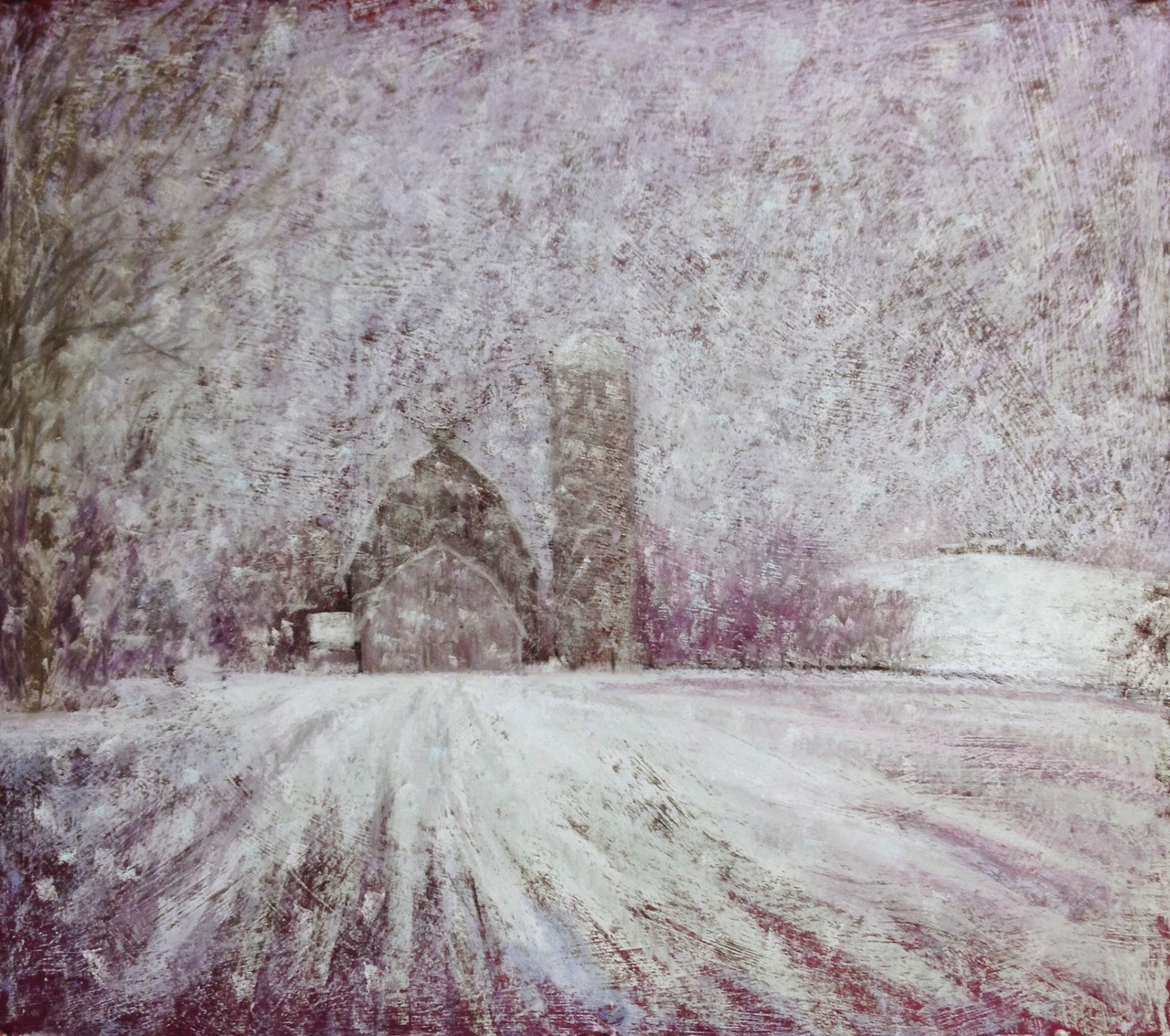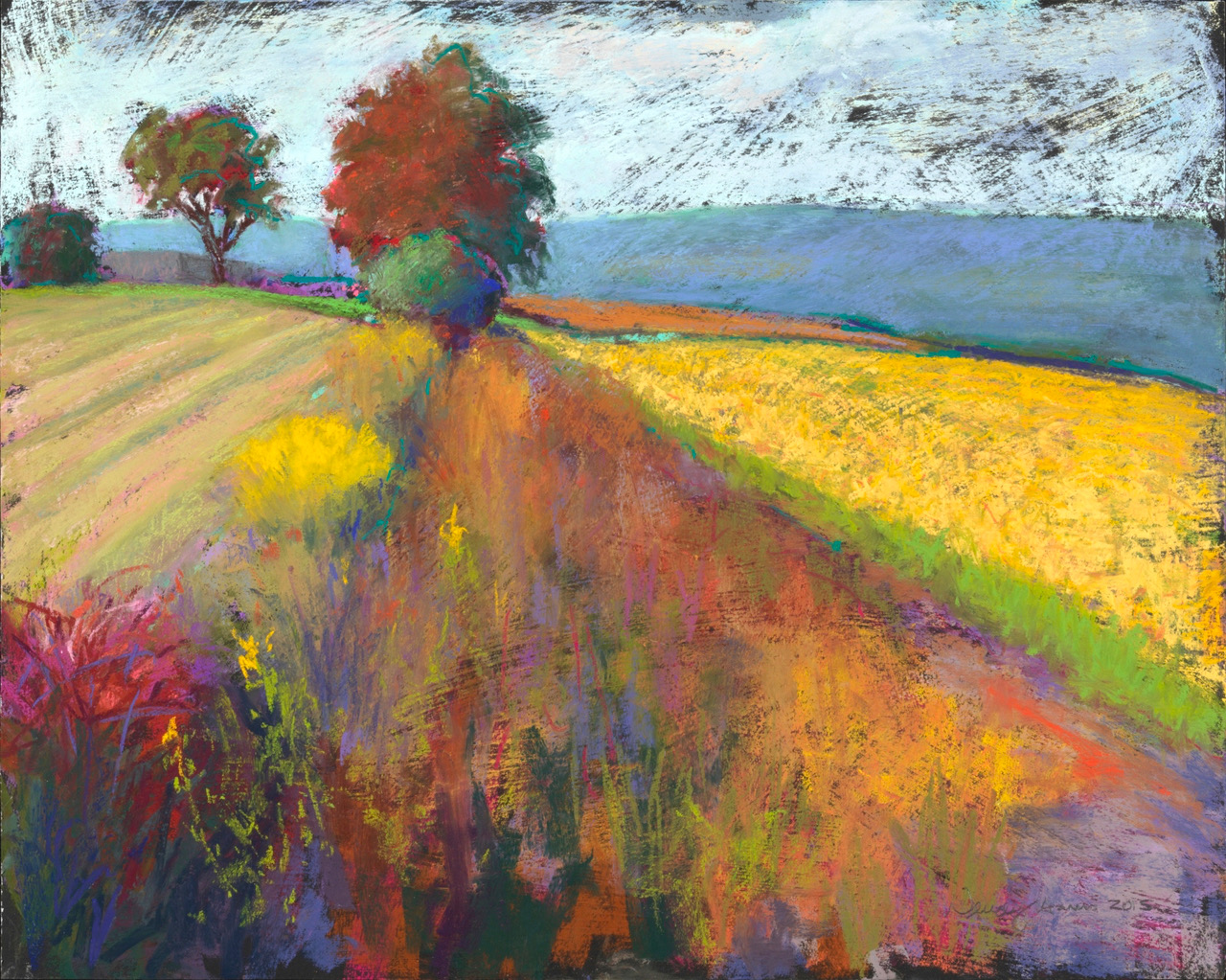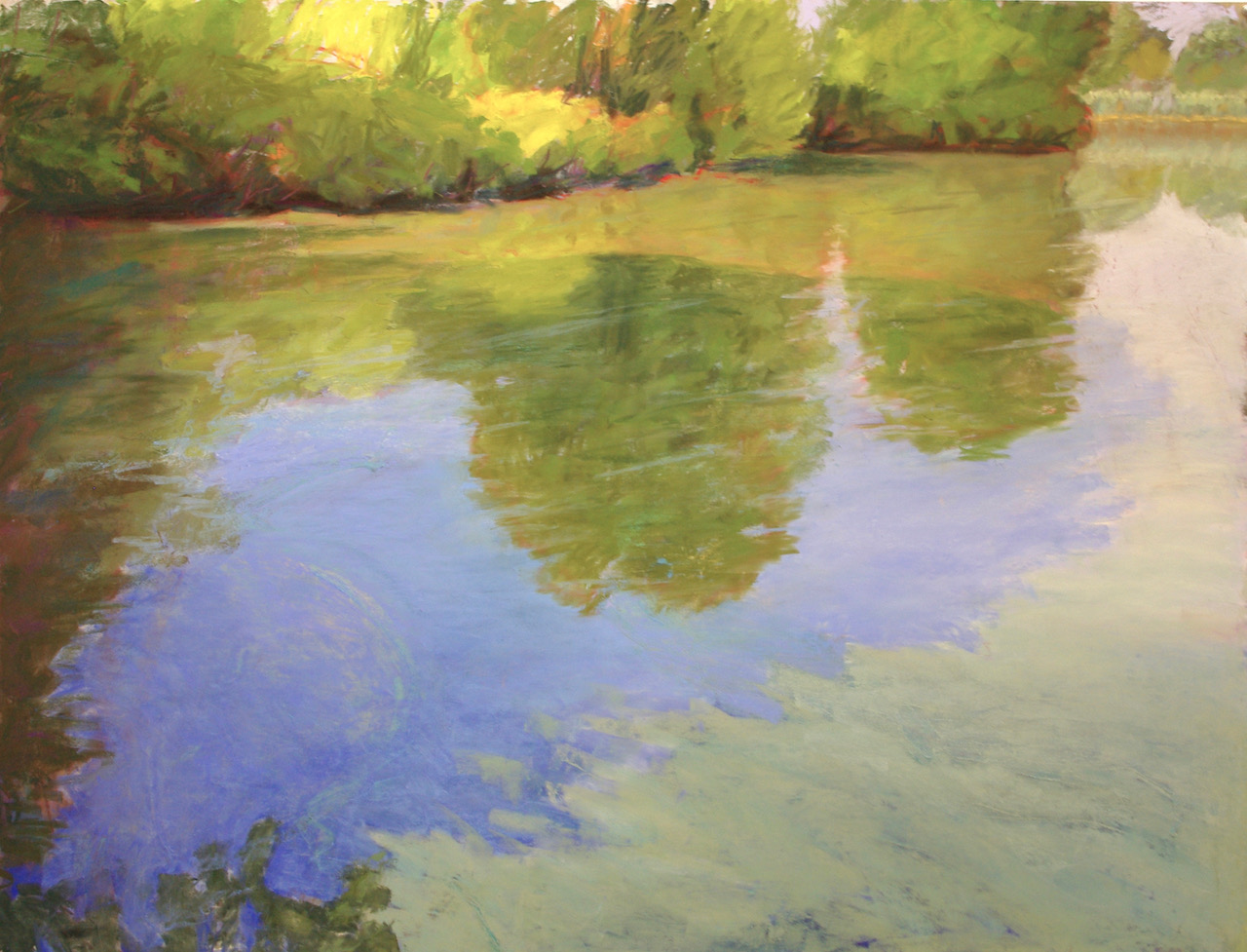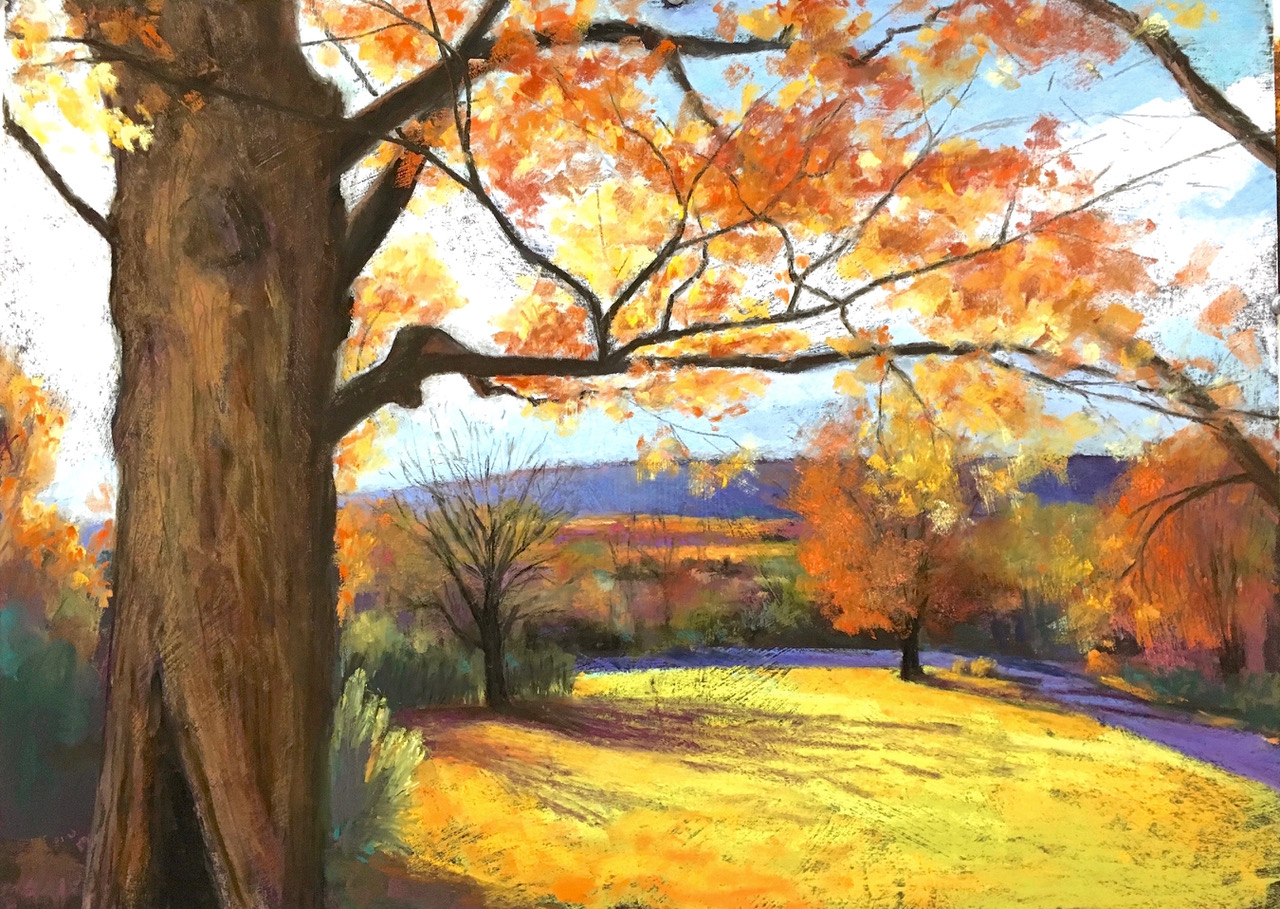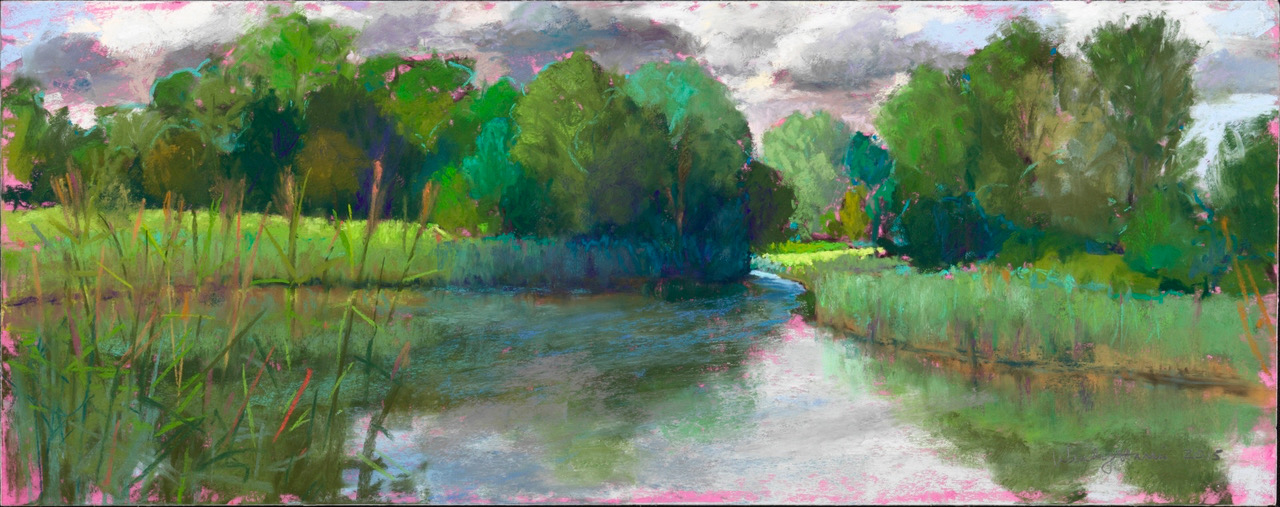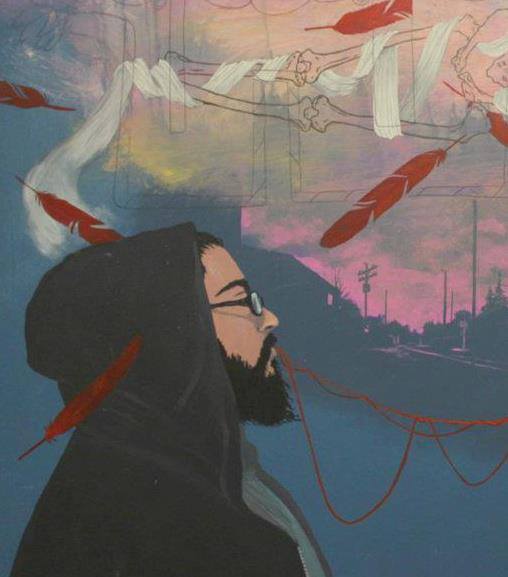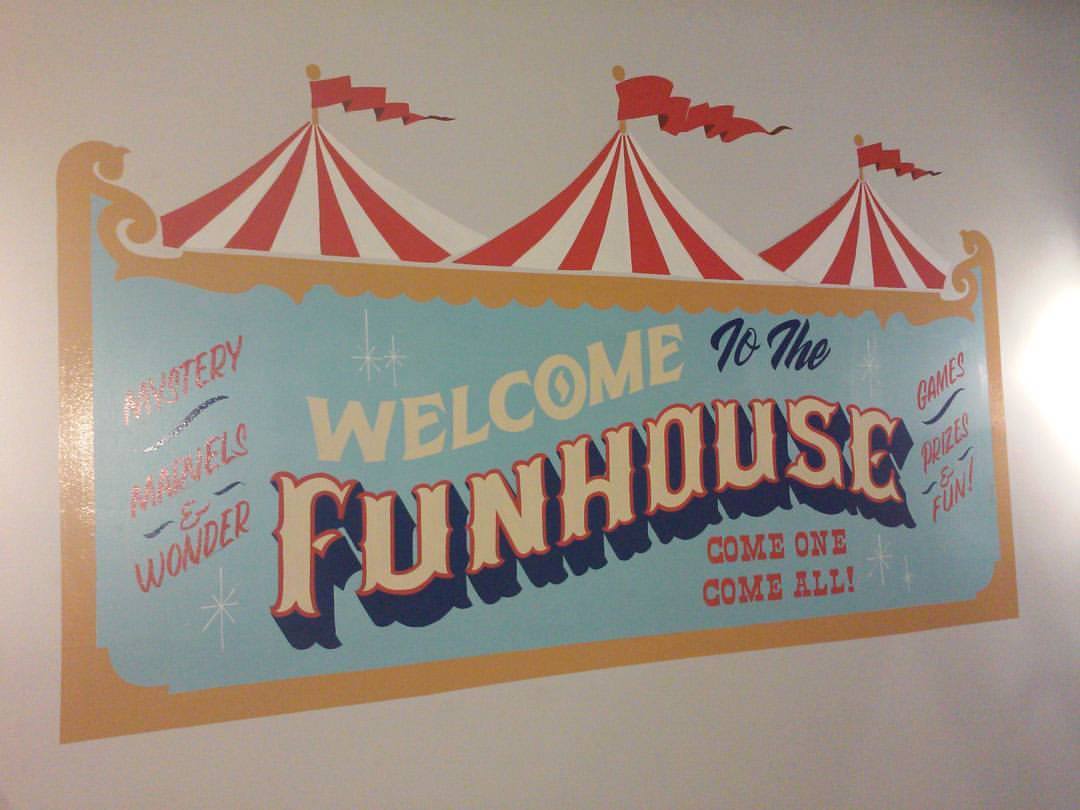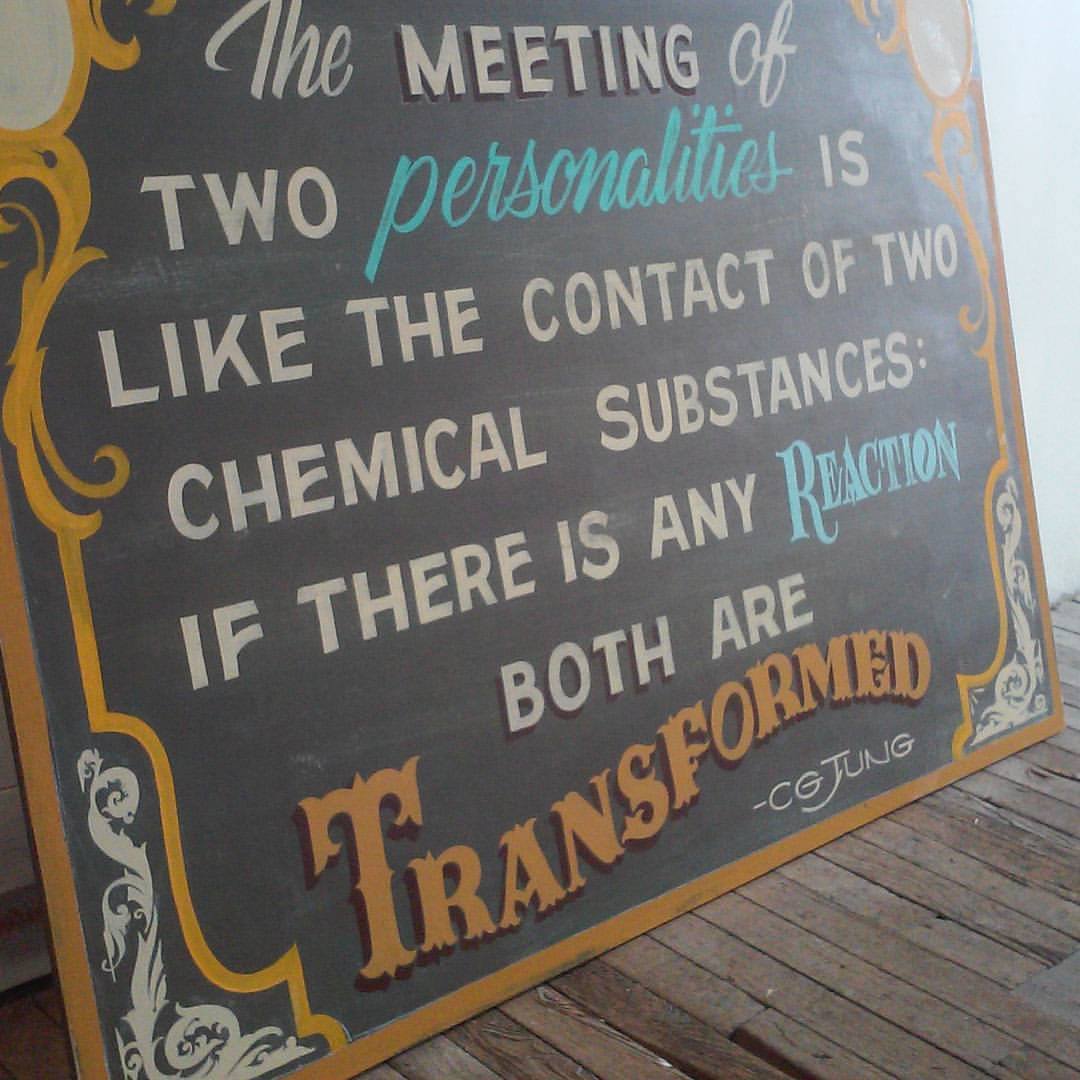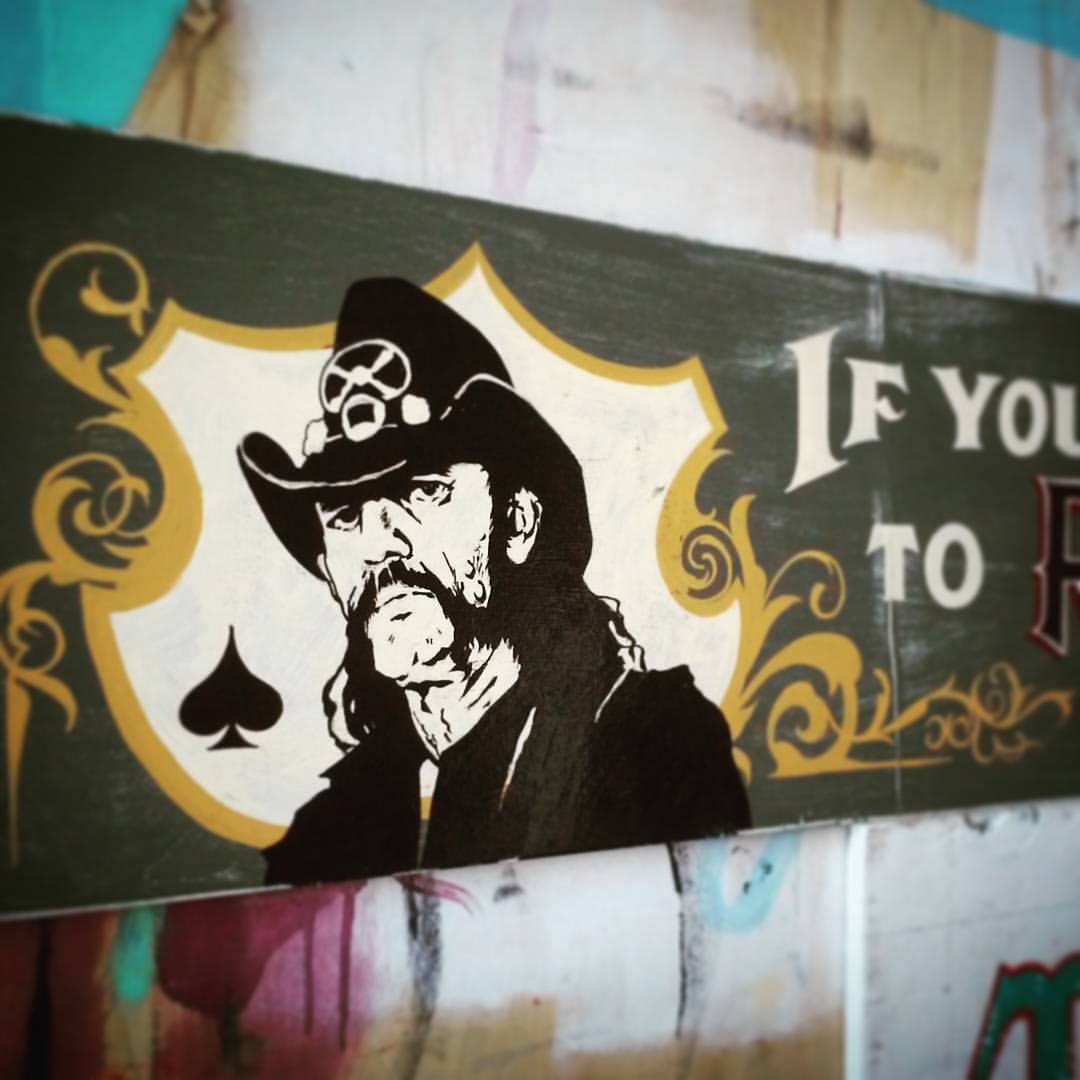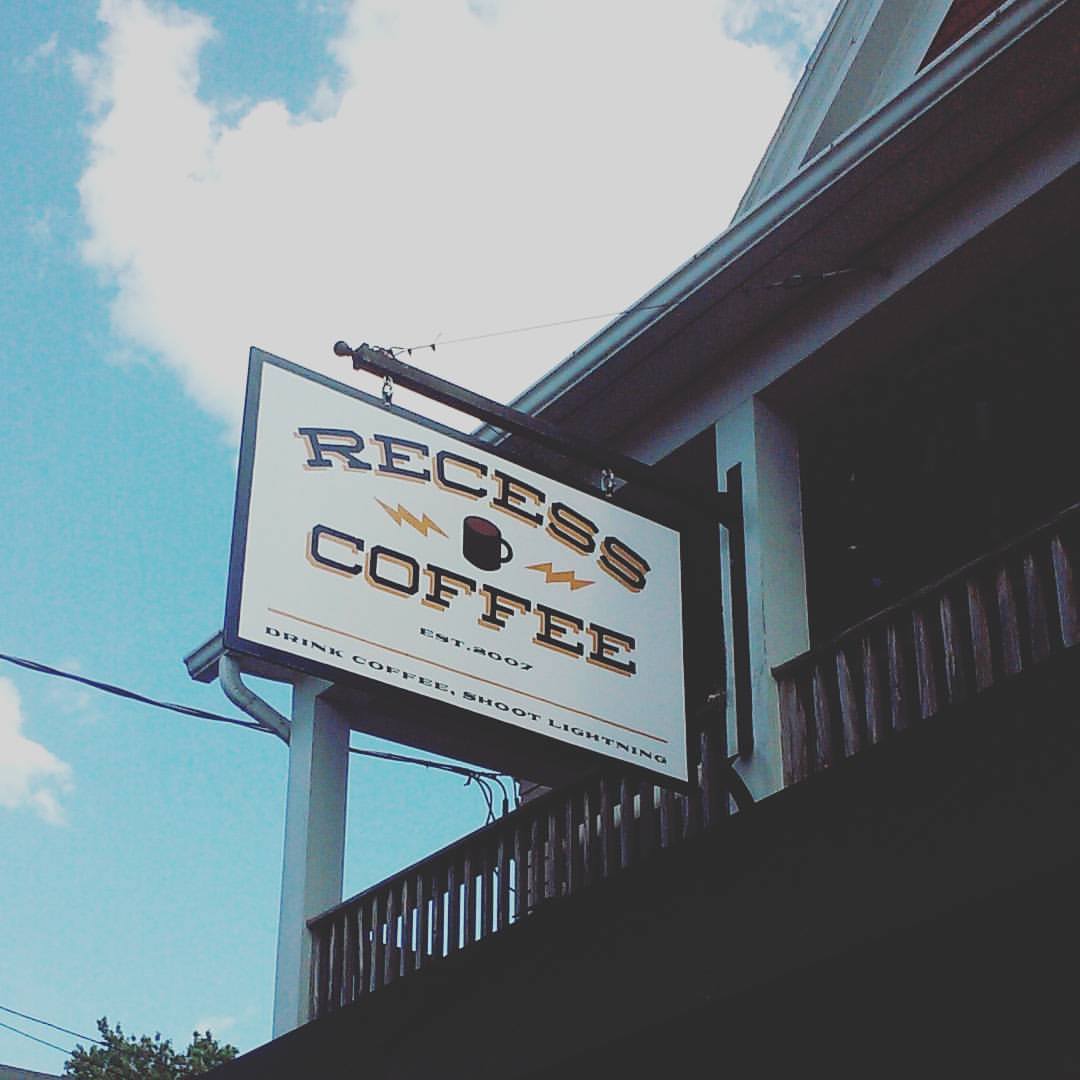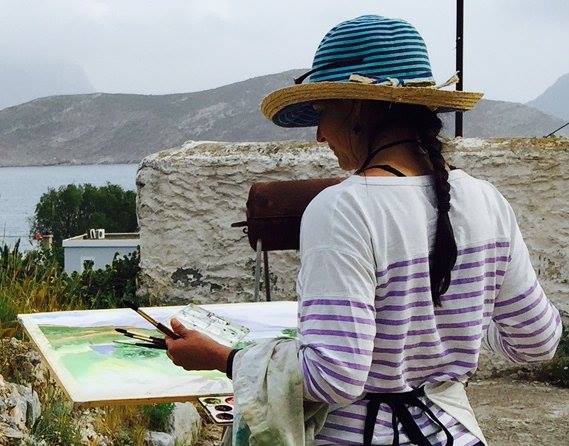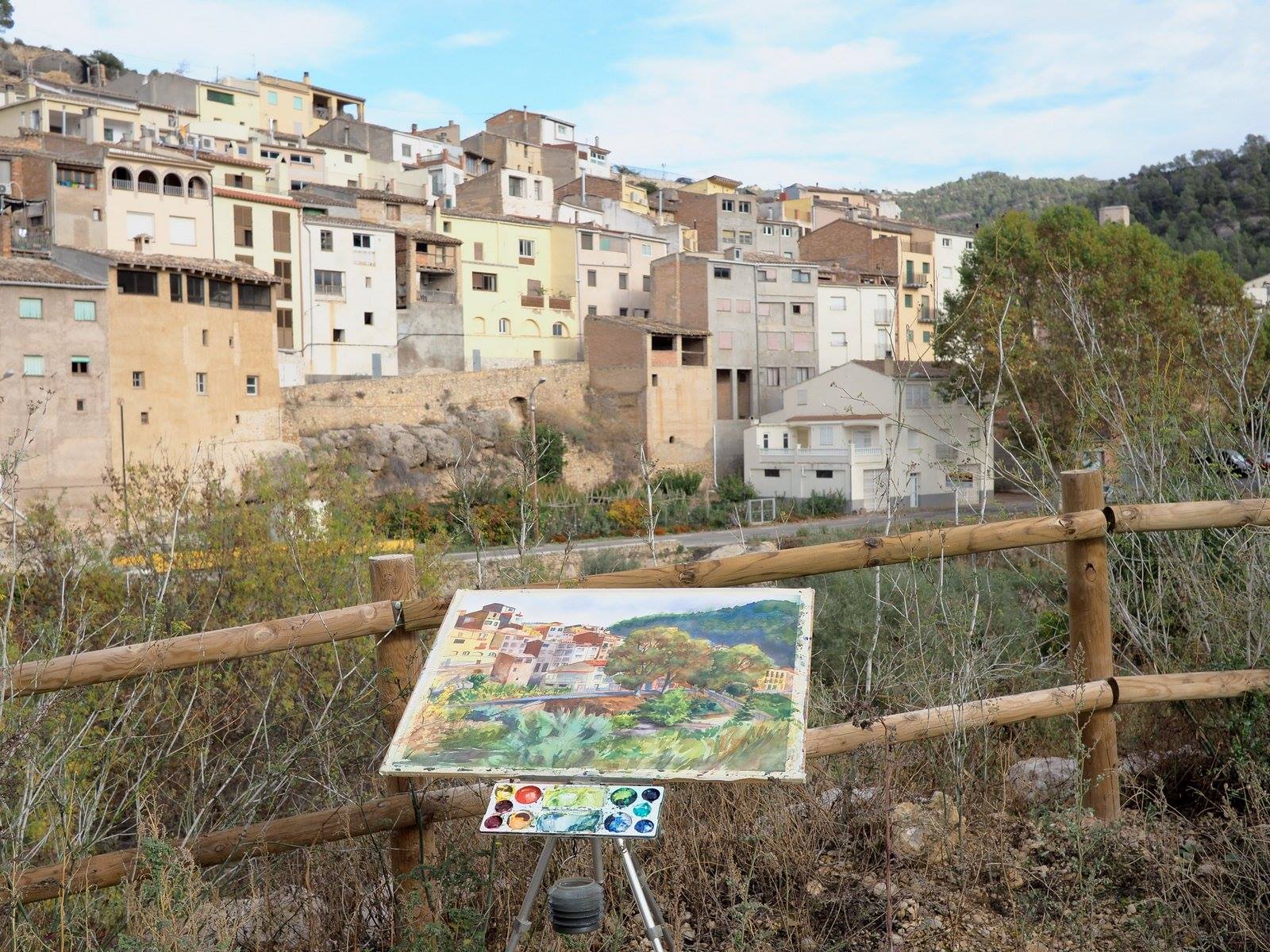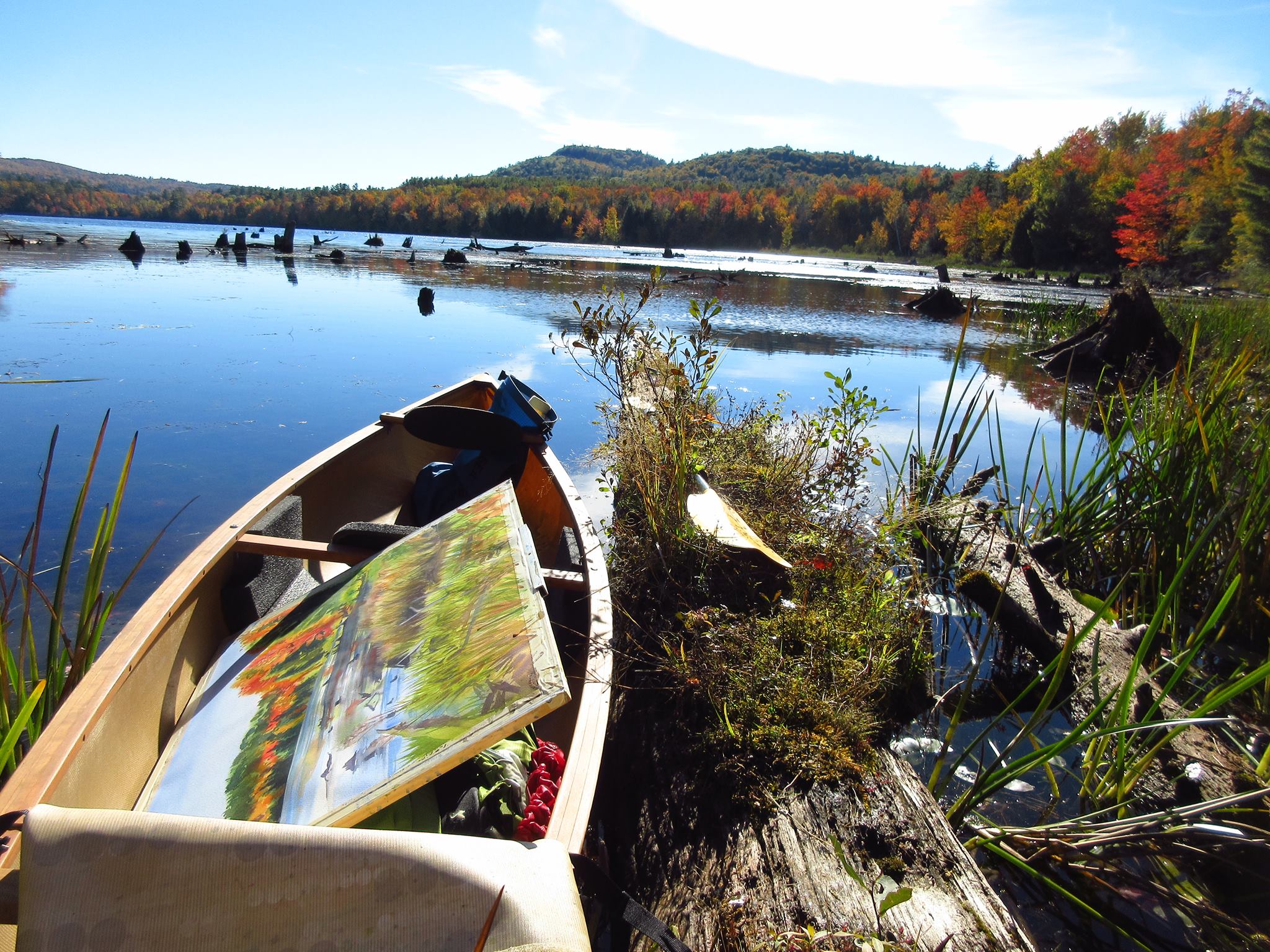How to plan for a successful art show and opening reception.
After an art opening it is a good habit for artists (give yourself a couple of days!) to examine what factors contributed to your opening's success and what things could have been done differently to make it better. Read more to discover tips on how to plan for a successful art show and opening reception.
My recent opening for Velatura was on Tuesday, April 4th at SUNY Empire State College in East Syracuse, NY, and to my delight, a lot of acquaintances, friends, and family showed up and enjoyed my art.
[A lot of photos were taken by my artist-friend, Karen who wrote a great post about this exhibit! To read her post click here!]
Yet, I believe that after an art opening it is good that every artist (give yourself a couple of days!) examines what factors contributed to the opening's success and what things could have been done differently to make it better. So....
What contributed to my art exhibit's good attendance?
1) Good planning, which included answering these 5 questions:
- Where are you going to show our art?
- When are you going to show your exhibit, and when are you having a reception for it?
- What art are you exhibiting? Is it a series or a retrospective of your work? Is it a solo show or a group show?
- Who are you hoping to reach out to with your art? Who is your target audience besides family and friends? I would recommend inviting art collectors, past clients, and journalists.
- Why are you exhibiting your art? Is it for sharing you passion with the world or for sharing your point of view on a social issue? Is it free and open to the public?
Selected paintings for Velatura: Creating Trees and places with Subtle Layers of Purples, Greens, and Blues.
2) Writing an artist statement specifically for my upcoming exhibition. For tips on how to write your artist statement read my blog post here.
3) Writing a press release which must be sent out to local news contacts at least 2 weeks before the reception. Check out this page on how to write an effective PR.
4) Designing and printing a postcard, or an invitation, to send out to your target audience, friends and family, a week before the opening. Plus, it's important to share the same visual design on social media to keep your brand consistent.
5) Hanging-up the art a couple of days before the opening. Make sure to ask for help from a friend or a partner. Things will move much faster!
6) At the reception make sure to bring:
- refreshments,
- business cards,
- and fine art prints of your work to sell, if it relates with your type of art.
- Also, don't forget to bring your phone or camera. Make sure to take a lot of pictures or ask a friend to document the night. These photos can be later used for promotional purposes!
Yet, there are three things that, if I could go back in time, I would have done differently.
1) I didn't give an artist talk, and that was a mistake because every time I explain my process, I share my passion with the people who enjoy my art or want to learn more. So, the learned lesson is: give an artist's talk every time you have an art show. It will give people an opportunity to further connect with you and your work.
2) I didn't have a e-mail sign-up sheet to collect emails for my arts newsletter, which is one of the most effective and cheapest ways to inform my fan base about upcoming events, promotions and so forth.
3) In addition, another technique I used in the past to draw a bigger crowd and make some money was to have a raffle of my work, I would either give away a framed print or an original painting and sell tickets from $2 to $5 depending on the value of my work.
Maria Rizzo gives an artist talk for her first group art show at The RedHouse Arts Center in 2010.
So yes, I wish I taught of that, too!
I'll make sure to read this blog post again before planning my next art show!!
Maria
10 Tips to Grow as a Visual Artist
When I was 22 years old, I decided to start a part-time business as a professional painter and my goal for that year was to create a painting’s series because I was told by an established artist, and by many art marketing books, it was the way to be represented by an art gallery. So, I did. I spent the whole year of 2010 creating my first body of work and that was the beginning of my creative venture. But how exactly do you grow as a visual artist? Here are 10 tips that have contributed to my growth as a two-dimensional visual artist.
Detail of Pink Flowers by Maria Rizzo
When I was 22 years old, I decided to start a part-time business as a professional painter and my goal for that year was to create a painting’s series as I was told by an established artist, and by many art marketing books, it was the way to be represented by an art gallery.
So, I did. I spent the whole year of 2010 creating my first body of work and that was the beginning of my creative venture.
Did I land into a commercial art gallery?
Not really.
What I wasn’t told then is that when you start out as an artist, your art is not that good; yet, it is CRUCIAL for you to start somewhere!
My 7 years’ younger self did the best she could do and, if I did let personal fears and other people’s negative opinions stop me then, I could not create the way I do today.
But how exactly do you grow as a visual artist?
Here are 10 tips that have contributed to my growth as a two-dimensional visual artist.
Study of Pears by Maria Rizzo
1) Just create. Don’t let perfectionism and fear stop you from even beginning your creative journey. Be kind to yourself as practice makes the master!
2) Learn the foundations. For any art discipline, to become good at it, you first need to learn the basics. Picasso once said “Learn the rules like a pro, so you can break them like an artist.” For visual artists learning to draw, color theory, and color mixing are crucial for their own long-term artistic success.
3) Learn to attentively observe. Keeping an art journal and sketching what catches your attention is a great way to further develop your eye/hand coordination and technique. A lot of famous artists, along with their sketches, wrote down notes about the colors and other details they observed while drawing their subject matter. This habit allowed these artists to recreate a more developed painting back in their studio, without missing out the important details they experienced while sketching from life. There is nothing wrong in taking a photo as a reference; yet, the point is not to just copy a photo but to put your feelings and experience into your final piece!
Painting tools with a flower field study in oil by Maria Rizzo.
4) Master your tools. In my experience, learning all I could about my art materials and tools was crucial for creating faster. Observing how other professional artists work is truly educational and illuminating. There are many art video tutorials that you can check for free online or think about investing into a local art class by an artist whose work you admire.
5) Go to art museums. My favorite teacher-artist became an exceptional painter by reproducing the art painted by the masters. Thus, reproducing other famous artists’ artwork is a great way to learn about composition, use of color and technique.
6) Stick with one medium. Chose a medium of your liking and master it. Once you are great at it, invest your time into another medium and master that one, as well. Don’t stop there, take the time to use new materials so that in the future you can experiment and find your voice.
Detail of Moody Trees III, oil on canvas by Maria Rizzo, 2017.
7) Take art classes. I’ve spent 5 years mastering acrylic painting until I decided to overcome my fear of oil painting by taking a class with an amazing local artist who paints like the old masters. Learning the basics and steps to create a successful painting from him gave me the confidence necessary to further grow as an artist.
8) Show your art and listen to people’s response. Since 2010, I have shown my art at local art guilds, online art groups, alternative spaces, non-profit galleries, art centers, and museums. Even though it’s always nice to hear positive feedback, what truly made me grow as an artist was receiving constructive criticism which ignited a personal desire to improve my technique, my composition and overall approach to painting.
Flower-field at Night, 8x10' oil on canvas by Maria Rizzo, 2017.
9) Listen to criticism with a grain of salt. Not all criticism is good. In the world, there are always rude people who love to share their misery with the rest of us. These people are not worth your time or energy; thus, do not listen to them, be the bigger person and move on.
10) Don’t compare yourself to other artists. There is nothing more depressing than comparing your art with the artwork made by others. What I’ve learned so far is that it’s way more constructive and realistic to compare my art to the art I created years ago.
Wow!
It’s amazing to visually see the growth I made as an artist through many years of hard work, curiosity, and perseverance. Furthermore, I look forward to see where this creative path will bring me 10 years from now, and yours!
Maria R.
The Artist's Path: 5 Fine Artists who Make a Living with Their Art
For this blog post, I've decided to highlight 5 professional fine artists, who make a living with their art, in order to inspire emerging artists that this career path, even though it's hard, is possible. These artists kindly shared with me who they are, what they do, and a piece of wisdom they learned along their creative journey.
For this blog post, I've decided to highlight 5 professional fine artists, who make a living with their art, in order to inspire emerging artists that this career path, even though it's hard, is possible. These artists kindly shared with me who they are, what they do, and a piece of wisdom they learned along their creative journey.
Bridget Bossart van Otterloo
“Time is your most valuable asset. Everyone gets the same amount of time in one day, it’s your choice to decide how you’re going to spend it. Make what’s important to you a priority.”
Q: Who are you and what do you do?
A: I'm a painter living in Corning NY, a small town with a great art community. I spend most days working in my home studio. I also teach part time in my studio and at 171 Cedar Arts Center here in Corning. https://www.171cedararts.org/classes/drawingpainting
My work is inspired by the beauty in nature.
Here is my Artist Statement:
My work is about the beauty in nature. I believe that this beauty enriches our existence, if we can only take a moment to pause our busy lives and take notice. Natural forms, elegant lines, bold colors, and the intrinsic details found in nature are the themes in my work. When painting, I represent nature accurately, but also with my own impression. I use the paint, oil or watercolor, in thin transparent layers. This layering technique creates a luminous glow throughout the piece, as light passes through and bounces off the different layers. With nature as my muse, I have yet to run out of inspiration. I hope my work serves to reconnect you with her beauty.
My work can be viewed at the West End Gallery and The ARTS Council of the Southern Finger Lakes on Market Street in Corning, NY. It can also be viewed at the Nan Miller Gallery in Rochester, NY
Q: How has your practice changed over time?
A: My work has always been inspired by nature. Over time I've broadened my subject matter to include landscapes and figurative work. I also enjoy working in ceramics from time to time.
Q: What work do you most enjoying doing?
A: My favorite part of the process is setting up a still life. It's at this point that the painting is full of potential and possibilities are endless.
Q: What’s the best piece of advice you’ve been given and learned in your art career?
A: Time is your most valuable asset. Everyone gets the same amount of time in one day, it's your choice to decide how you're going to spend it. Make what's important to you a priority.
Wendy Harris
“you never get worse by doing - just keep painting”
315-727-6577 www.wendyharrisfineart.com
Q: Who are you and what do you do?
A: I’m largely a landscape painter, both plein air and studio; pastel is my primary medium. I love the immediacy, vivid color, depth, and elasticity of soft pastels. And I’m just finishing up a 48 x 75” commission of a cityscape done in acrylic and oils. I’ve been graced to have been the singular 2D commissioned artist for Upstate Medical Center’s new Cancer Treatment Center which is entirely decorated with regional art along the theme “healing through nature.” I have eight additional paintings and prints in the exquisite facility. I am happily getting a reputation for being the go-to artist for healing environments. What an incredible privilege.
Q: How and where do you work?
A: My studio is in Syracuse's Delavan Center, the largest collection of artists under one roof between Rochester and Albany. I work, as well all do, in solitary pleasure. I am happy to get outside when the weather allows but nothing is as rich as the late summer and autumn months in Central New York State. Strangers invited me to visit and paint where they lived… France. I very much liked that too…! Where to next?!
Q: How has your practice changed over time?
A: This latest commission has forced me to be doggedly dedicated to daily painting for several months, a discipline I have long resisted but welcomed and learned from. My practice has changed over time. First, I have matured as an artist due to just age and doing. I have come into my own, finally being able to say “I can do this” and "this is who I was meant to be.” I now give private lessons and love it. I am working into the use of a brush and other mediums, eager to see where that takes me. I am getting looser and more daring in color, both are welcome but not always predictable.
Q: What work do you most enjoying doing?
A: I confess I love chasing clouds and the late afternoon golden hour. Those are two distinctly different activities and times of day as clouds so often disappear at sunset. Clouds require reference material in a studio as they are so ephemeral. I’m a proud member of the Cloud Appreciation Society. Golden hours are meant for plein air painting which is so satisfying - the conditions of the day return as a gestalt whenever I view the image. Maybe the moment you fell in love does that for you, but here it is repeated so many times with the many wonders of the natural world. I count myself very lucky.
Q: What’s the best piece of advice you’ve been given and learned in your art career?
A: “you never get worse by doing - just keep painting”
Cayetano Valenzuela
“[Every] one of us is equal in the fact that we are given 24 hours...in a day and we chose what we do with that 24 hours...Are we dedicated enough to make that time count? ”
Q: Who are you and what do you do?
A: My name is Cayetano Valenzuela and I am the owner of Black Rabbit Studio. Black Rabbit paints signs, does illustration and a little design work.
Q: How and where do you work?
A: I have a studio in the Delavan Building on West Fayette St. Syracuse. I also have a home studio and workshop. I cut and build at home and paint at the studio. I draw wherever.
Q: How has your practice changed over time?
A: Most definitely. Hand painted signs have been keeping my pretty busy these days. I had been doing more illustration and painting five years ago. I still do that but I have had to find a new balance in order to grow my business. I think I am still changing how my business works and what it works on. I am constantly trying to refine Black Rabbit Studio
Q: What work do you most enjoying doing?
A: Honestly I love to draw. I love to draw letters and I love to draw figures. I also love vintage ephemera whether it be old circus & movie poster or fading ghost signs. Searching for inspiration in old books or on the internet or in antique shops and finding great illustrations or examples of lettering is so much fun.
Q: What’s the best piece of advice you’ve been given and learned in your art career?
A: The best piece of advice came from my college professor Prof. Torlen. He said, We are not actually born equal, we are born under different circumstances and different economic and social barriers, We all have different skill levels and drivers. However, where we are in fact equal, every one of us is equal in the fact that we are given 24 hours. 24 hours in a day and we chose what we do with that 24 hours. We could go to the movies we could sleep we could go a hang out with friends and we can make art. Each one of us must chose what we do with those 24 hours. What we as artists must decide is this: Are we dedicated enough to make that time count? The dedication to have a life in the arts for me came from those words. It has continued to inspire me to this day. I can't and will not have a life where these hands don't make art everyday in one form or another. I know that is what I am made for. So I swing a brush for a living and I am happy to do just that.
Lucie Wellner
“Hillary Paige...taught me to use a small “view finder” made out of a piece of matboard and clear plastic, divided into quadrants. This helps see, select, and simplify...the scene. I never start a plein air painting without it.”
Q: Who are you and what do you do?
A: I am an artist and designer. My focus is primarily watercolors and I also do some freelance design. I paint watercolors outside as much as I can, and also paint in my studio at home in Pompey. Traveling always offers loads of inspiration because the landscapes and light quality are different from Central New York. The studio is great because I can control my environment and touch up hastily painted scenes, explore new techniques and mediums and incorporate photographic references. I try to stay away from copying photos, but occasionally they are very useful as a departure point, or for creating a painting that is less dreamy and more accurate. An example of this is this painting of a rose that I photographed at the E. M. Mills Rose Garden in Thornden Park.
Q: How has your practice changed over time?
A: I have tried to focus mostly on watercolors in order to get a handle on how to best use the medium, but I remain interested in drawing with pen and ink, block printing, and fantasize about learning about a million other art practices. I like to test out new techniques at Open Figure Drawing. The figure never disappoints as inspiration.
http://openfiguredrawing.com/
Q: What work do you most enjoying doing?
A: The work I enjoy doing the most is un-interrupted, hands-on activities that help turn down the volume of brain static. Painting outside, especially in a secluded area, satisfies this requirement perfectly.
Q: What’s the best piece of advice you’ve been given and learned in your art career?
A: If I have to cite just one piece of advice that I've received, it's the one from Hillary Paige. She taught me to use a small "view finder" made out of a piece of matboard and clear plastic, divided into quadrants. This helps see, select, and simplify (her words) the scene. I never start a plein air painting without it.
Linda Bigness
“Be your own critic and work everyday.”
Q: Who are you and what do you do?
A: I am a professional artist in residence at the Studio 245, Delavan Center, 509 W.Fayette St. Syracuse, NY Phone: 315-491-3346
Q: How and where do you work?
A: Studio 245
Artist Statement
I am an internationally exhibited artist who maintains a gallery/studio in Syracuse, New York. My work has been exhibited in several prestigious solo and group shows that have involved notable jurors such as art critic Clement Greenberg, Ivan Karp, director of OK Harris Gallery in NYC, and Tom Piche, director of the Daum Museum of Contemporary Art. In addition, my large scale paintings are often selected and commissioned for corporate and residential clients, including the Turning Stone Resort, Merrill Lynch Corporation, Haylor, Freyer and Coon, and Bausch and Lomb. I continue to exhibit professionally at several venues with artwork featured frequently at the Nan Miller Gallery in Rochester, NY.
Presently I am working on my latest book and exhibition about abstract art and the contemporary processes used by working artists today. Part of the research for this book is taken from the workshops I teach and my oil painting and mixed media collage experience. For over 30 years I have used my expertise to share with others the unique beauty and processes of my chosen medium through writing, teaching and professional exhibits.
My first book “Paint It, Tear It, Create It” offered the reader insight into visual abstract thinking through the process of collage into painting. I continue to explore the abstract through surface manipulation using encaustics and oil and I am currently working on a new series, the “Journey Stones Revisited,” that reflects my extensive travels through the United States and Europe.
Q: How has your practice changed over time?
A: See my web site for the professional growth and new work: www.bignessart.com
Q: What work do you most enjoying doing?
A: I am a painter who enjoys the discovery of media and its applications in all forms.
Q: What’s the best piece of advice you’ve been given and learned in your art career?
A: Be your own critic and work everyday.
I hope you enjoyed learning about these talented painters as much as I did and took a moment to read their advice on time management, daily art practice, a trick to successfully paint an plain air, and how you should be your own and only critic.
Maria Rizzo
The Artist's Path: Understanding the Art World
If you are a newcomer artist, who wants to achieve success in the privileged art world, Tomiuc suggests that there is only one way to do so, which is by branding yourself. Yet, understanding the mechanics of the art market, the system of art collectors, art dealers and museums of art can be quite an eye opener (p. 6).
Since first stepping into a fine art high school in Italy, I wondered why a selected number of contemporary artists were enormously famous while the majority remained completely unknown.
Self-portrait on the Borderline Between Mexico and the United States, 1932, Oil on metal, 12 1/2" x 13 3/4", Collection of Mr. and Mrs. Manuel Reyero. Source: http://www.pbs.org
I realized that the craftsmanship of their art was not the reason why they had superstar careers, and I observed the trends of conceptual art and minimalist art, and the artists’ fervent goal of creating shock in the public. It felt like true appreciation for the skillfully created, beautiful works of art disappeared to give space to a different form of art, the entertaining spectacle. And that always hit a nerve. I thought “great, if that’s the direction the art world is taking, I guess I’ll never join that boat. I’ll study Botticelli, Michelangelo and da Vinci instead, and learn a thing or two from them.” Yet, even though aware of the sad reality of the art world, after reading about Frida Kahlo’s life and work and graduating from high school in 2007, I left Italy with a big dream of becoming a well known fine artist and making it as a professional painter. Yes, I truly believed I could make it, but I just didn’t know how. I thought the next step was to study art in college so, in 2008, I enrolled in the Visual and Performing Arts department with a major in painting - how wrong I was! Picasso wrote: “Learn the rules like a pro and break them like an artist” and all I was pushed to do was to break the rules and experiment, experiment, and experiment without being taught the rules in the first place! ‘Asking professors how to get into a gallery was like pulling teeth. I should have taken the hint from them that, unless super famous, it’s too hard to make a living solely with your art.
Source: www.amazon.com
In 2009, I made the hard decision to put my education aside to raise my growing family. Then the universe gave me a sign. One day, I remember feeling particularly frustrated about my assumption that without a degree I could never make it into the art world. That day, an aunt of mine gave me a book that she found at a garage sale, and it changed my life. The title of this book How to Survive and Prosper as an Artist: Selling Yourself without Selling Your Soul by Caroll Michels. This successful sculptor committed herself in helping other artists by fighting the myth of the starving artist and by coaching them the foundations necessary to become creative business professionals. In her book, Michels nicely explains how galleries are not the only way into the art world and how nobody will discover you at your house and make you famous. Thus, step by step, she guides artists into effective way to promote their art. The book, for many years, was literally my bible; it was my go to for building up my portfolio, my promotional materials, my website, and to build-up my artist resume’. Becoming a professional artist is a commitment for life, and she warned in her book to find a day job, not necessarily art related, to feed into this difficult path.
Yet, the questions remain: why are a selected number of artists super famous while the rest of us are completely unknown? What does it take for a new comer to climb up into the art world?
The original Fountain by Marcel Duchamp photographed by Alfred Stieglitz at the 291 (Art Gallery) after the 1917 Society of Independent Artists exhibit. Stieglitz used a backdrop of The Warriors by Marsden Hartley to photograph the urinal. https://en.wikipedia.org/wiki/Fountain_(Duchamp)
To answer those questions, I think it’s important to first understand what the art world is, what the art market is, and why artists and art institutions have to become brands to become famous and successful. Senior lecturer and PhD, Anamaria Tomiuc explains in her journal article, Branding in the art world: the contemporary visual artist that the art world is a “socio-economic systemic network” that includes “critics, art curators, artists and collectors…within galleries and museums” (p.5). If you are like me and wonder why conceptual art is considered art, sociologist, Howard S. Becker lays down a deep truth. Becker writes that “the theory states that reputation is founded on the art works. But in reality, the reputation of artists and of their art works derives from the collective activity of the art worlds” (qtd in Tomiuc). This means that whatever the art world says is art, is art, not the hours you put into your work or the dedicated experience you have built throughout the years to excel in your craft. If the art world says that what you have created it’s not important art, then it is irrelevant, while a toilet titled Fountain by Duchamp is internationally celebrated. Because… Conceptual art! You are very welcome to throw a fit right now, I totally understand the frustration, but it gets worse!
Poster. Source: http://archiv.monopol-magazin.de/
If you are a newcomer artist, who wants to achieve success in the privileged art world, Tomiuc suggests that there is only one way to do so, which is by branding yourself. Yet, understanding the mechanics of the art market, the system of art collectors, art dealers and museums of art can be quite an eye opener (p. 6). Tomiuc identifies the art gallery as the most important institution of the art world because they have the highest control over the art made by the artists. Interestingly, for the past three decades, art galleries have used continuous curated art shows as a strategy to sell a large number of art works while quickly raising the value of the art pieces. Then we have the collector, who plays an extremely important role in building the credibility of the artist they choose to invest in, with the capability to launch their career to an international level. These collectors, with their large capital and their involvement as board of directors in art museums, play different roles in the art market: they buy art, sell art, they curate exhibitions, and sometimes they even open contemporary art museums (p. 6, 7). Whoa, right? Art history has and will be written around these eccentric millionaires’ taste.
The art market also includes the auctions houses and the art fairs, which are responsible for the rise in the price of the art and the quota of the artwork sold, and are the places where dealers search for new art trends and see what they like (p.7). Established artists whose art is sold in these markets, will witness an increase in the value of their work. Collectors buy art signed by what they think is an important artist as an investment for their social status; therefore, collectors, media coverage, fancy art events, and contemporary art museums, and galleries all build up the image of the artist as a superstar (p. 8). Therefore, Tomiuc advises that to become famous and being able to monopolize the art market, they have to brand themselves.
You might ask, how do you do so? How do I brand myself??
Andy Warhol's Self-Portrait, 1986 sold at Sotheby's in 2010 for $32.6 million. Source: http://www.sothebys.com/
Tomiuc shares that Warhol branded himself by using self-promotion, and by creating an image that he kept consistent throughout the years (p. 10-12). Tomiuc shares this in her article:
As R. Moulin says, the strategy of the newcomers involves a collaboration with one (or more) leader gallery (brand gallery – Gagosian, Gladstone, Haunch of Venison, Yvon Lambert, etc.) which assures their launching and promotion on the market, the acquisition from a great collector (brand collector – Saatchi, Pinault, Arnauld, etc.) – which gives them an international passport – then, the diversification of the galleries, dealers and collectors they collaborate with. An important aspect in the building up of their celebrity persona and their brand is the use of advertising and marketing strategies and a lot of media exposure in articles and professional magazines (Art Press, Frieze, Flash Art, Artforum, New York Magazine, etc.), pages in catalogues (Art Now, 100 Contemporary Artists, etc.) and tabloids. The receiving of an important award (Turner Prize, Prix Marcel Duchamp), the participation in major branded cultural events (the Venice Biennial), the insertion of their works and important major exhibitions in brand museums (Tate Modern, Centre Pompidou, MoMa, Guggenheim, etc.) follow. (qtd. In Tomiuc)
So that is the advice, if you want to become a zillionaire artist super star. Good luck in the process! I think I’ll go through a different direction; I am a creative entrepreneur who will keep building up her business along with a future career as a professor. I will keep creating art to show in galleries and shops, work on art commissions for clients, and I won’t be consumed by the scarce chance of making it into the art world. I am grateful that I can create art, sell art, and that I have a balanced work/life. In my next blog post I’ll talk about how to brand yourself as an artist not much to please your ego, but to fulfill your creative soul. Stay tuned.
Work Cited
Tomiuc, Anamaria. “Branding in the art world: the contemporary visual artist.” Journal of Media Research. 8.2. (2015): 3-13. Online Library OneSearch. Web. 18 Sept. 2016
Michels, Caroll. How to Survive and Prosper as an Artist: Selling Yourself without Selling your soul. New York: Henry Holt and Company, 2009. Print.
MARIA RIZZO
Trees, Lands & Dreams | Art Blogger #theartistspath | Art Educator | From Italy 🇮🇹🇺🇸 |



